


|

|





|
|
||||
|
|












Follow us on 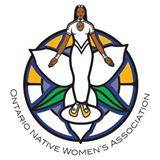
|
|
Who are the Metis?apply Metis Status Card? Aboriginal Status Card rights benefits applicationThe Metis (pronounced MAY-TEE, -- and in french "Métisse -- pronounced MAY-TISS") are people who descend from Native Americans and another ethnicity, historically Europeans (French, Scottish, British, etc). Which registry you are part of depends on your culture. Metis culture was created by a blend of European and Native American cultures. Voyageur Metis is a registry for anyone with Native ancestry and has family who lived in / were culturally part of the French Canadian "Muskrat" communities that were established along the historic Voyageur routes (all along the rivers and lakes) of the Great Lakes regions surrounding the Detroit historic fur trade area. Some traditional activities include fiddle music, family songs, squaredancing, jigging, fishing, trapping, hunting, collecting wild plants for the different seasons and harvests, plant knowledge for use as food and medicine, and making maple syrup. Our specific Metis culture includes language, song, and foods which are historic and particular to our specific region. Traditional handiwork includes (but is not limited to) floral beadwork design, moccasin and drum making, sash weaving, pipe carving, basket weaving, soap, candle, braided rugs, quilts, herb sachets, leather and pelt processing, bandolier bags, saddle making, and textile work. Even though generations of denial and hiding caused some families to lose parts of their culture, many of the Metis today still have parts of this culture intact. Our goal is to share our cultural knowledge and pass on traditional wisdom to the next generations. We also seek to encourage pride by identifying native ancestors, sharing information about them, and through the celebration we have together in our community, at our Rendezvous! ________________________________________________________________________________________ MYTHS ABOUT NATIVE ANCESTRY: OUR OPINIONS BASED ON EVIDENCE AND ACTUAL EXPERIENCE IN RESEARCHAll people with French ancestry from Quebec have Native ancestry This is absolutely not the case. There are very many people with Quebec French ancestry who have no Native ancestry. All people with Acadian ancestry have Native ancestry While it is believed that most Acadians have Native ancestry, it is impossible to prove conclusively because of the nature of record-keeping for certain time periods in some areas. All Fur Traders had Native Wives Not all fur traders had Native wives, but some of them did, particularly if they were an "overwinterer" (hivernant). Fur trade contracts can sometimes indicate if a man stayed in the west for the winter, and for how many years. This can sometimes be a clue to check for children of the fur trade. There are now over 35,000 contracts in the fur trade contracts database. Surely many of these men fathered children while on the trail that there are no records for, but that circumstances can show what their real identity is. We have such evidence. Contrary to recent claims made by some scholars, there is evidence of Native ancestry for children who were born in the fur trade areas and brought back to Quebec. Not only that, but fur trade journals and oral history in fur trade families tell of wives having been left behind, and children being taken away from their mothers and brought back east after the fur trade waned. French people with dark features (hair, eyes, skin) must be part Native Because early 1600s Quebec saw the immigration of people with various ethnicities (Portugese, Spanish, African, etc.), there are many families of early French ancestry today with dark features who do not have Native ancestry. We see this often from doing their family tree, and often we suspect this from photos provided. Native features tell us more about a person's ancestry than dark features do. Just because people in a family have dark hair, eyes and skin does not mean they have Native ancestry. Some surnames in early records of Canada indicate other ethnicities (for example DaSylva, dit Portugais, L'africain, Rodrigues, etc). Native features are only a clue that there may be reason to research one part of a person's genealogical tree, as that would be the part suspected of having Native ancestry. DNA proves or disproves Native ancestry conclusively Because DNA only traces certain types of haplogroups, it is not always a perfectly accurate marker for someone living today, with generations of ancestors in North America. While this might work for our ancestors because we can test many people as to their haplogroup (esp women), it doesn't work for every type of testing done for people who are alive today, so it is not a conclusive way of determining Native ancestry. Ancestor photos showing people with "Oriental looking" eyes must be Native There are many ethnicities that migrated from the east (Siberia for example) toward the west (Russia, Poland, etc) and then on to North America via Europe, rather than what scientists have proven was part of the migration that occurred thousands of years ago via the Behring Strait to North America. Therefore physical features are not always accurate markers of Native ancestry. The exception could be for a person whose family (esp French Canadians) have been in North America for many generations and could be a clue to finding their ancestry. Also, if their migration patterns fit with that of Metis families, then this is also an indication that Native ancestry may be present in ones' tree. Claims of "White people" trying to "become Indigenous" OUR OPINIONS There are claims swarming around, which are usually being made by academics who have little to no real-life experience with researching ancestry for visibly Native people. These "experts" are using their credentials to spread the claim that having Native ancestry 10 generations back puts one in the category of being a "White person becoming Indigenous". Usually these claims are then lined with the suggestion that people are claiming to be Indigenous so they can get benefits. There are very many people living today with ancestry from the 1600s who are as visibly Native as any other indigenous person in Canada. The reality is that genetics are funny that way -- they are unpredictable, and they often result in visibly Native people with ancestry that far back. For people who are from visibly Native families and communties, especially after racism became the norm (after the fur trade waned and the issue became about land), fear, shame and hiding were the result for these families dealing with oppression. Racism does not stop to ask how far back someone's Native ancestry is before making them a victim. There are very many people who faced racism as either visibly Native themselves, or from a family that was, and for that reason alone, those people are just as entitled to own it as anyone else. Disposession, relocation, residential school, lack of jobs, lack of resources, and a variety of other forms of oppression affected Metis families too -- in all locations across North America. Casting judgement onto other peoples' experience (by people claiming to be experts) is very telling of their lack of understanding of the real problems that have been historically faced by Indigenous people. We've even witnessed scholars telling a whole room of people that elders telling their stories is something to laugh at, because they don't deserve to feel anything about coming out with their stories of struggle in their families and communities -- that somehow, their shame or fear in telling these (sometimes very personal, embarrassing or fear-invoking) stories is laughable because their shame or fear is not real. Here -- an audio recording of a seminar given as part of a series hosted by a University in Saskatchewan, in which Assistant Professor of Sociology Darryl Leroux makes such claims -- ("Now I am Metis: How White people become Indigenous") (They couldn't talk about it... but now they can... and it makes them feel so much better... laugh, laugh...) among many other ideas he presents which are strange assumptions and words put into peoples' mouths which were never part of their work, including commenting on an article written in French and "translated" for a mainly English audience and presented as a factual translation but which was actually very skewed - 
https://soundcloud.com/indigenousstudiesusask/native-studies-speakers-series-darryl-leroux-now-i-am-metis-how-white-people-become-indigenous We are not sure why Mr. Leroux has targeted 2 members of our community for his "presentation" but rather than study the sociological results of the hiding and oppression that occurred in Metis families and communities, this academic chose to discuss what he deems to be a cultural appropriation of sorts, and it appears he did this without presenting any evidence to prove his assertions. We find this shameful. We also find it shameful that he continues to point the finger on social media at persons in our community who have nothing to do with the information on our web pages and have not contributed to it whatsoever. These persons also have nothing to do with what Leroux claimed in his seminar to have written or believe about Metis families, communities, or identity. He also states in his presentation that there is no proof that children of the fur trade were taken back to Montreal yet we have proof from legal records that Metis children were brought back, which makes us wonder -- how many archival genealogical records and fur trade families has Mr. Leroux actually studied to come to this conclusion? You can find this proof by clicking here. And even if he had done this research, he doesn't seem to know that fur trade journals mention the practice of men not only leaving their Native wives behind in the west, but also taking their children from their mothers, leaving her to mourn them, as shown in these excerpts from fur trade journals -- 
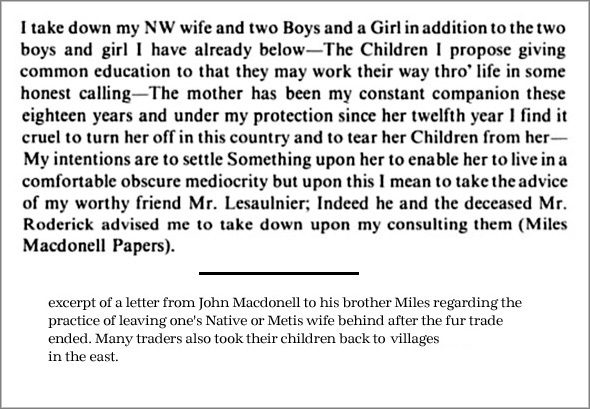
One would think that if a professor is going to make claims about a subject, or about other people's ideas about a subject they should at least have evidence for what they are telling a room full of people. It appears that Mr. Leroux's seminar is a collection of assumptions with what sounds like nothing presented to back it up. And recently he has added comments on social media suggesting that by our posting the information about black ancestry above, he feels we are confusing early Canadian history with the history of slavery -- and yet he doesn't seem to know that there were families in 1600s Quebec with surnames such as "L'Africain" and "De Niger" which translate literally to "The African" and "Of Niger" (among others), for whom some of their descendants have furnished photographs to us, indicating what appears to be black ancestry. Where does he suppose these families came from? Furthermore, some of these "experts" seem to enjoy being able to point out who has experienced what, in other peoples' families and communities, something in reality that these "experts" appear to know nothing about. But thousands of people know what this is about, because they participated in this "collective amnesia" in hiding their own identity, and this is part of their story. Everyone has suffered from the oppression of Indigenous people, and now ironically, today, some people who appear to be "policing" offences of cultural or identity appropriation are committing offenses against other Indigenous people. This is just another episode of shameful mistreatment. The ideas being spread around that Metis outside of ones' experience could not possibly have a "legitimate" community or culture because it is "unknown" to the claimants is ridiculous and insulting to those who live it, and only perpetuates more marginalization. - - - - - - - - - - - - - - - - - - - - - - - - - - - - - - UPDATE - January 2017 At a conference put on at the University of Alberta, which you can view the podcast at https://livestream.com/ualberta/events/6841112/videos/147834359 While Gabriel Daniels (son of Harry) asked the crowd to include all Metis from the different areas of Canada, and Tony Belcourt suggested that the Powley test is problematic, and that we must not exclude other Metis (and BRAVO to them for having done so!) many false assumptions were made by OTHER presenters about this community, including but not limited to, that Metis orgs outside of Red River "Nations" have no community, that they use DNA to verify persons (which this org does NOT do), that orgs collecting membership is somehow different than what Metis in the west have been doing, that eastern Metis orgs are somehow claiming to be more pure, more Metis, or more entitled than those in the west (which this org has NOT done), that other orgs had no sense of themselves as Metis, that "it speaks to a wider trend in eastern Metis of universal use of European, white settler, and / or Euro-centric thinkers, to explain indigenous life past and present" (as if western Metis have not used this same type of research to defend their communtiies), that "There is literally hardly any engagement with indigenous or indigenous thinkers in any of this material" (except that we are Indigenous, so that ruins that idea --). We could go on and on debunking their claims about Metis orgs. We find the job unnecessary, as it is already pretty clear on this website. What we will do, is highlight one aspect of misrepresentation in our opinion, of our community, our org, and our registry, with this item -- Please watch the podcast at the link here, at about 02:04:00 https://livestream.com/ualberta/events/6841112/videos/147834359 ------ Or better yet, you can access exactly what he said to the crowd by clicking on this snippet What Gaudry Actually Said ------ 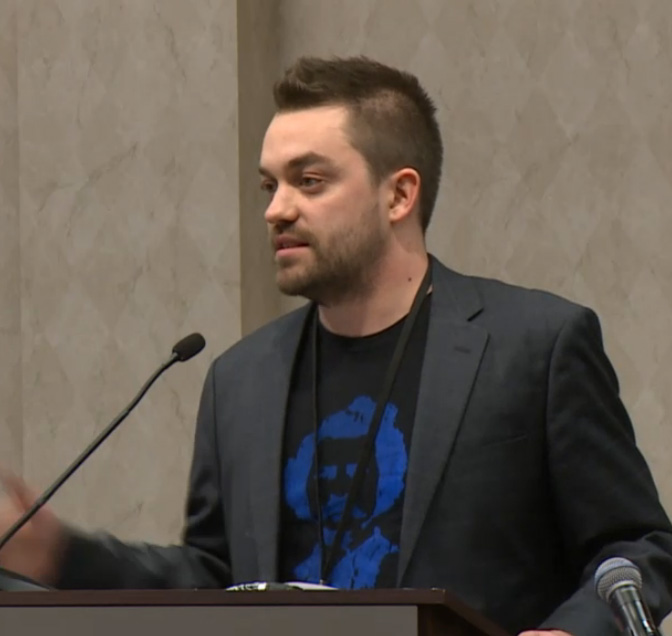
where you will witness Adam Gaudry, University Professor, while listing which orgs in the east he feels do not have culture or communities -- He states -- "... the communities of the Voyageur Metis, another organization, state that getting a Metis status card means your genealogy has been verified to be true and accurate. It is proof that you actually are part Native." "(And part Native in this sense becomes Metis.)" -- his words, not ours. And here is the page section he took from our website, except he left out the end of the sentence -- 
And here is the datestamp for when that webpage was last updated -- which was in 2015. The information did not change since then. He omitted it from his audience. 
------ Now compare what Mr. Gaudry said -- to this Metis identity video where an MNO member stated -- "I always knew in my heart I was First Nations", and admitted that he never knew the word "Metis" nor had he used it to describe himself. 
MNO Traditional Plant Study (at 2:13) ------ OUR OPINIONS -- First, it is important to note that we are not "becoming" anything other than what we've always been, much like western Metis communities, who for years have verified genealogies to register their members, thereby collecting their families in registries. And collecting families in registries is what all communities have had to do, including those in the west. But it appears that a number of scholars would like people to think that other orgs outside of Red River are not legitimate. Yet they don't seem to know that fur trade children were taken back east and west, and that many Metis families also formed communities beyond Red River. Some scholars even ventured to claim that Metis children were not brought east, but we have proof they were. To get a glimpse of such proof, please click here. Second, the use of "Muskrats" as part of our unique identity is not a new term; it is a historic one. The term "Muskrats" was used to describe us, up to our parents' day, often times in a derogatory way, much like "Half breed" was used in the west. We are now reclaiming that name to make it part of a positive and resilient French-Metis heritage. Cherry-picking parts of our description by hiding reference we make to "community" and "culture", moreover in an attempt to cast our community and members being only about genealogy, thus appears inappropriate and harmful to our communities, to say the least. For all intents and purposes, this descriptive end to that sentence means that if for example, someone has ancestry that is Scottish + Native from our areas, then no, they will not be registered with our org. One must have recognition as having been part of us "Muskrat-French". It must be clear that proving a connection to Indigenous ancestry is required with the Voyageur Metis community (otherwise, how can we speak of Indigenous people here?), but that such criterion is not sufficient. As a community, we accept and welcome French-Metis descendants who are part (or have been connected) to our kinship system and common history from the areas that the French-Muskrat people have historically inhabited. We therefore denounce any attempt to tarnish the reputation of our community by portraying our organization as being only about genealogy (or distant ancestors), especially by scholars who modify or leave out part of our criteria in a public lecture to create some other version of it. We would therefore expect a more respectful approach, especially from University scholars endowed with special responsibilities in our society, and especially from those who admitted for example in their own thesis writings, that their family did not use the term "Metis" to describe themselves, and that they needed some "community building" and indigenous people outside of their family to "ground" their own identity. We feel humility should guide such people toward more respectful conversations about Metis identities. (Thesis written by Adam Gaudry 2009, piii -- used for educational purposes -- http://www.collectionscanada.gc.ca/obj/thesescanada/vol2/OKQ/TC-OKQ-5094.pdf ) 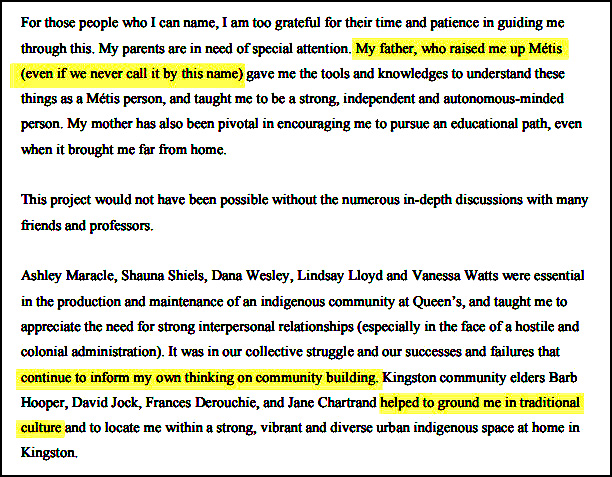
Ironically, while Mr. Leroux and Mr. Gaudry profess they know all about registries, neither of them would answer the question -- which was asked by someone in the crowd -- about how someone would verify a person as Metis for a registry (at the end of the recording). This is something we pride ourselves in knowing much about for our community, as we have much documented information on our Muskrat communities from various eras. These scholars would then like people to believe that ancestry is not necessary in verifying Metis people in a community, and going so far as to suggest that using genealogy means a registry or community is therefore "not legit". Ironically however, the use of genealogy to verify a person's place in an Indigenous community appears to be what has shed light on discovery of the case of high profile Joseph Boyden and his claim of being Indigenous -- appearing to not have any proof in records or in his family tree. Scholars are glad that genealogy has shed light on this issue (as we all are), but these scholars would like everyone to believe that the orgs representing a Metis community outside of the west should not be using genealogy to do so, and yet for Metis orgs in the west, that is exactly what they do (at least solid registries do). And so far as proof that this community has existed, we have photographic and other evidence showing our cultural activities have been and still are very alive and well. This community has never been "disenfranchised" First Nations people. We have always been Metis. - - - - - - - - - - - - - - - - - - - - - - - - - - - - - - Claims that "He's too White to be Metis" Question. Which is the biological child of this Metis woman? 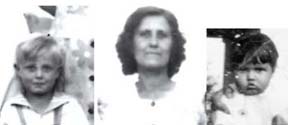 Answer. Both of them. In Metis families, there are both Native and Nordic looking people. Just looking at appearances we cannot tell one way or another whether someone is Metis. There are people today who are from First Nations reserves who are blue-eyed blondes. There are also Metis who are blue-eyed blondes, who have grown up more culturally Metis in their daily practices and upbringing than some of their very Native looking relatives. You cannot tell by looking at someone whether they are Metis or not, because their ancestry is both Native American and European. Again, genetics regarding actualization of physical characteristics are unpredictable. Any Metis could experience racism. Someone with blue eyes and blonde hair who witnesses their very visibly Native mother victimized by racism is also a victim. That person might also directly be a victim of racism due to association to their visibly Native family. Claims that "Metis Started in Red River" There are over 35,000 fur trade contracts that we can access to discover who exactly was in the fur trade, but that doesn't mean all Metis families started then. But just for the sake of today's new argument, that somehow being part of a "Metis Nation Homeland" defines who is Metis, and who is being called a "mixed" or "mixed-blood", let's examine this claim more fully, by taking a closer view of the fur trade of the 1700s and 1800s (when most contracts were signed). 
This contract above indicates that the clerk was spending 5 years in the Northwest. The red circle shows where he actually was during that time (Wisconsin). It also shows he was from Sorel, Quebec. There were fur trade posts across North America, and a look at the database reveals that most voyageurs travelled to very many of them, not just Red River. Their families and children born of the fur trade were spread across North America. The 1815 Halfbreed Peace Treaty outlines the first agreement between settler issues and Metis families of the fur trade and how peace would be attained. The transcript from the Pemmican War Trials of 1818 shows one lawyer who described the Metis as having their own ways of life and their own rights for at least a century prior to that (1718). This evidence among many others proves what Metis families across the country have always known -- that they have always had the right to exist, and they have a right be be considered Metis (with a capital M). This is part of the archival documents left to us. (Information on this site are the opinions of Voyageur Metis. Photos of persons used on this site are from family albums within our communities.) culture identity who are the metis? apply for application Metis metis status card "metis status card" metis status cards list organizations to issue metis status cards government listing indian aboriginal native american authorized |
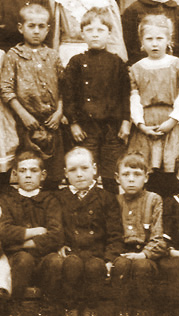 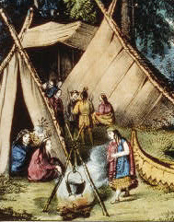  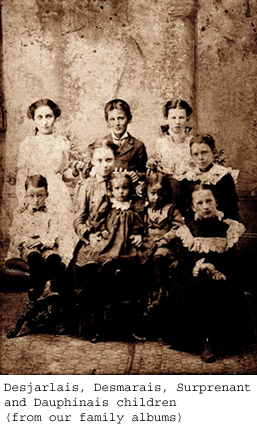
Follow us on Facebook |